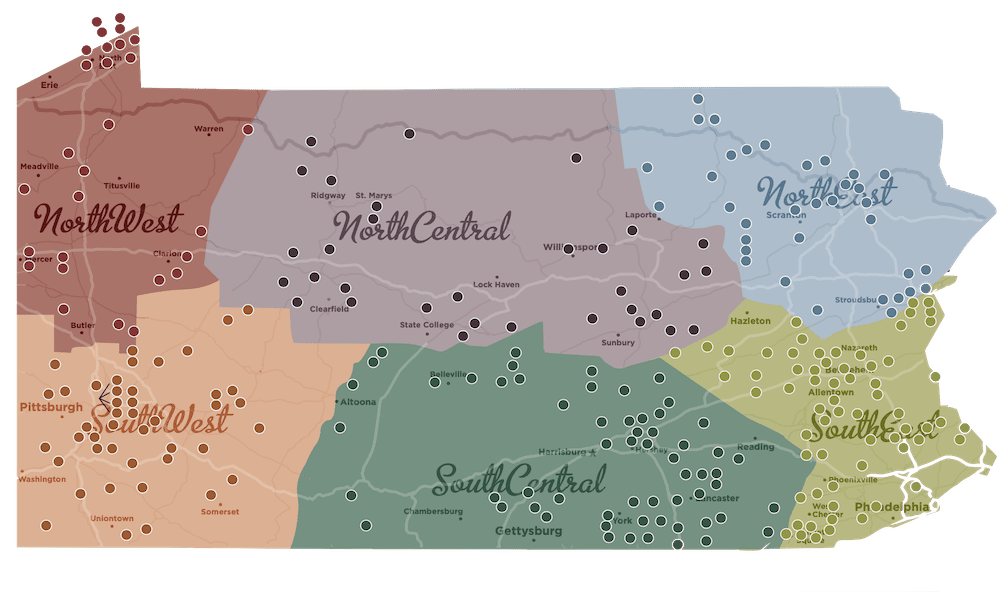Welcome to Pennsylvania Wine Land…
Pennsylvania boasts a legacy of winemaking that has grown into a dynamic wine industry fueled by the desire to drink locally, grow sustainably, and innovate in the footsteps of William Penn. Pennsylvania winemakers continue a centuries-old tradition that began in 1683 when William Penn planted the first vineyard in Philadelphia in what is now Fairmount Park.
With more than 300 wineries covering all regions of the state, residents and visitors to Pennsylvania are always within an hour’s drive of at least one winery. Today, Pennsylvania wineries are the home to multi-generational winemakers, international winemakers, emerging winemakers under the age of 30, and winemakers who have embraced wine production as a second career.
![]()
Pennsylvania has more than 14,000 acres
of some of the most fertile grape-growing land on the
East Coast.
![]()
Numerous wine trails make it easy to explore
Pennsylvania’s diverse wineries, surrounding local arts
communities, and cultural and culinary destinations.
![]()
Pennsylvania’s wine industry has an economic
impact of $1.4 billion.
![]()
With an eye on sustainability, Pennsylvania
wineries have adopted geothermal and other
conservational and regenerative farming practices.
![]()
Pennsylvania’s climate – hot summers and
cold winters – is more like Europe than California or Australia
and presents the ideal terroir for emerging French-American
hybrid grapes, and traditional vinifera varieties.
![]()
Pennsylvania produces more than 2
million gallons of wine annually.
![]()
Local wines can be found on the wine lists of some of the top
restaurants across the state and in the pages of local, regional,
and national publications including features in Wine
Enthusiast, Fortune, and Forbes.

ABOUT THE PENNSYLVANIA WINERY ASSOCIATION
The Pennsylvania Winery Association is a non-profit trade association representing more than 135 member wineries and an advocate on behalf of the state’s growing multibillion-dollar wine industry. With some of the most fertile grape-growing land on the east coast, Pennsylvania ranks fifth nationally in the number of grapes grown and seventh in wine production.
There are five designated American Viticultural Areas in Pennsylvania. Explore these three:
Lehigh Valley AVA. Recognized for its unique microclimates and fertile land, the Lehigh Valley AVA is an ideal environment for red grapes Chambourcin and Cabernet Franc and whites Vidal and Riesling. Lehigh Valley is also home to the original Grüner Veltliner plantings in PA.
Lancaster Valley AVA. The Lancaster Valley AVA rests on a deep limestone bed, which produces grapes that are rich and ripe, ideal for Cabernets, Chardonnays and Rieslings.
Lake Erie AVA. Historically known as the “Grape Belt of America,” the lake region’s cold climate is ideal for native grapes like Concord, Riesling, Niagara and Catawba, and emerging varieties like Noiret and Vidal Blanc.